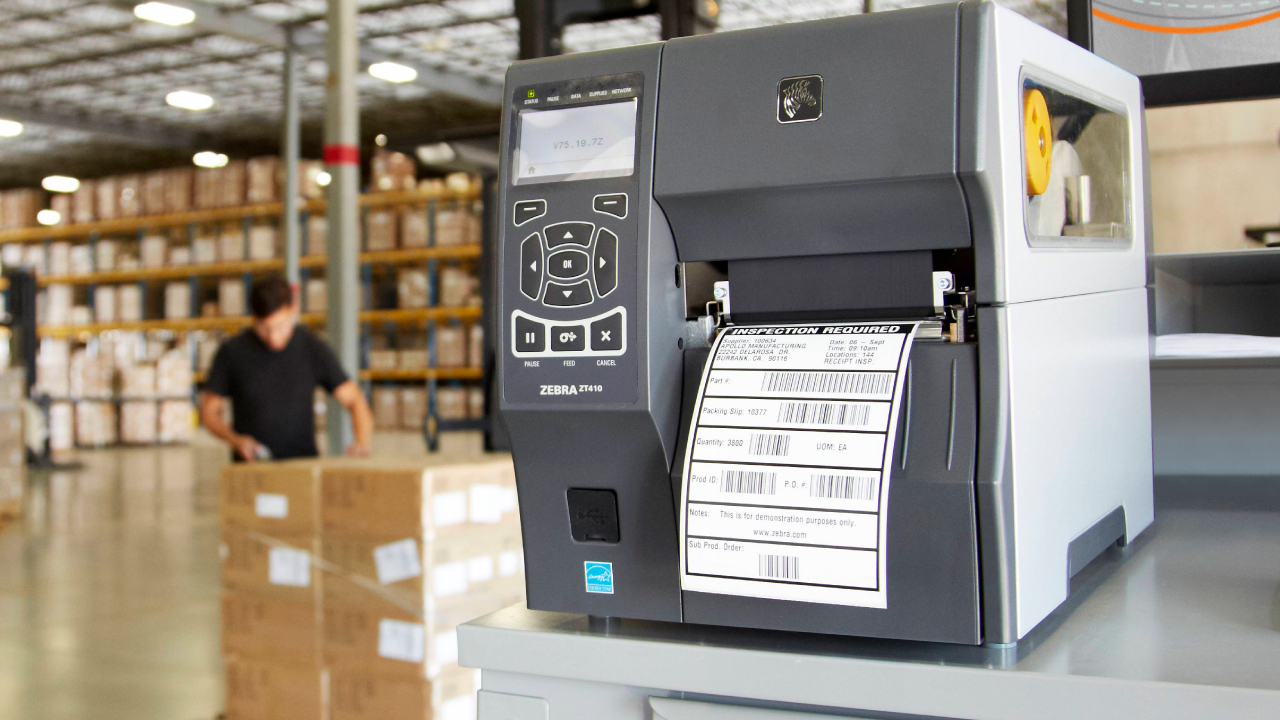
Want a Better Return on Investment for Your Thermal Transfer Printing Solution? Rethink Your Ribbon Selection
As a society, we’ve become very accustomed to gauging the performance of technologies such as smartphones, computers and printers by their “speeds and feeds.” Which is fine…if you’re focusing on these capabilities through the right lens.
Take printers. I presume that when you’re evaluating printers for enterprise use, one of the things you want to know is “the speed of the feed.” Literally, how many seconds, minutes or hours will it take a certain printer to produce a single barcoded label or RFID tag – or 10,000 of them? Time is money. The number of labels you can print in a certain period of time impacts the number of orders you can successfully feed down your line – produce/pack, label and ship – within target fulfillment timeframes, which can make or break your business in the “now economy.”
But this is far from the only “speed” or “feed” that you should be thinking about when selecting the various components of your printing solution considering that printing performance can directly impact your business’ performance. Beyond the default or maximum feed rate, you should also assess:
- Printer configurability speed
- Troubleshooting/error resolution speed
- How easy it is to feed / reload new media or a ribbon into the printer
- The quality of the “feed” (i.e. does the label come out clean and crisp?)
All of these “speeds and feeds” together impact the speed of your workflows as well as overall business output.
But truth be told, your focus shouldn’t even be entirely on the printer. Or the label.
A bold statement, I know. But the printer alone can’t be fully credited with the performance of your printing solution; it does not regulate all these speeds and feeds. Even the highest-quality printer can fail to perform to standards if you aren’t feeding it with the right supplies. And though I spoke quite extensively about the mission-critical impact of your label selection in my last blog, labels aren’t the only supplies that influence to the effectiveness of your labeling/printing application.
Think of a printer like a vehicle. Not only does it need fuel, but it needs the right type of fuel, in order for the engine and components to work as they should.
While you certainly wouldn’t put diesel in a gasoline engine, it’s also unlikely that you would refill your high-performance sports car with regular (87) octane fuel if the engine requires premium (91- 94) octane to operate at peak performance. Sure, your vehicle will likely still start and even run okay for some time if you use the lower-grade gasoline. However, the engine is going to start knocking eventually and other fuel system components could become damaged. At best, the decreased vehicle performance becomes frustrating. Most likely, it will cost you time and money in some way. So why take the risk in the first place?
The same idea applies to enterprise and industrial printers.
Yes, you need to be sure you’re feeding through the right type of labels for your business application (and your printer). However, you can’t forget that printers are really just the “vehicles” for your labeling application; they are driven by engines that perform best when “fueled” by certain ribbons. It’s not just about the type of ribbon, either. The quality of the ribbon you put in that printer makes a significant impact on the quality of what comes out. And you know how important label, wristband and/or card legibility is to your business, whether it’s a human, scanner or RFID locationing reading the information.
That is why it is so critical to understand the role that both your printer and the supplies play in determining printing “speeds and feeds” and take a more holistic approach to performance assessment and solution selection.
Ribbon Quality Dictates the Quality of the Printing “Feed” – and Sometimes the Speed
As I explained in my last blog, determining whether or not a printer’s output will be favorable – or consistent – is not as simple as picking the right printer. (Or even the right labels.)
Ribbons also play a critical role in the quality of your label and tag printing. They help to keep the “feeds” portion of your printing system running optimally.
So, if you forget everything else I’ve said so far in this post, remember these six things the next time you buy supplies for a new printer (and even before you reorder ribbons for your current printer):
1. Just because you’ve identified the right printer for the goods you’re labeling or tagging doesn’t necessarily mean that your ribbon will produce high print quality and image durability at the printer’s speed capability. Does your ribbon supplier test image quality and durability at various printing speeds? Can your supplier assure you that you’ll get the image quality and durability its testing indicates on the printer you’ll be using? Smudged barcodes are an unpleasant surprise you don’t need. (If you’re already experiencing this issue, now you know why. It’s time to shop around.)
2. Your supplier should be able to prove that the ribbon you use is compatible with the label and tag materials you’re printing on and suited to the requirements of the printing application. Otherwise, you may find out too late that the wax or resin doesn’t transfer properly to the media, resulting in poor print quality and low resistance to physical abrasion and chemicals. Printing labels or tags that aren’t scannable or readable causes rework—and wasted time and money.
3. Your choice of ribbon impacts the service life of labels or tags. Not all ribbon types and formulations will meet the durability requirements of a given application. Ribbons are available in wax, wax/resin and resin, and the market offers more than 100 formulations among these material categories. Their adherence to paper, polypropylene, polyolefin, polyester, acrylic and polyimide materials varies, and each ribbon offers different levels of resistance to chemicals, outdoor exposure and abrasion.
4. Image quality is critical. Particularly if your label format includes rotated or “ladder” barcodes. Plus, not every ribbon can provide excellent print quality with a complex label format such as 600 dpi, small characters, intricate images or rotated barcodes. Confirm that your ribbon manufacturer tests the image quality for each of their ribbons using ANSI standards.
5. Premature printhead wear and the resulting need for printhead replacement is a major cause of printer downtime. Make sure your supplier tests its ribbons to ensure there is minimal backcoating buildup on the printhead.
6. Last but not least, limiting ribbon selection to price alone can result in preventable operating expenses that far outweigh any price “savings.” The consequence of poor label quality stemming from ribbon issues range from reprinting to increased IT tickets to printer downtime and even the missed tracking of goods. All of which can reduce operating profit margins.
Again, the importance of choosing the right ribbon for your labeling application/printing workflow cannot be overstated.
The printer is not a solo act. It alone does not deserve the acclaim (or blame) for the performance of your labeling solution. There are several hardware, supplies and even software components that must work harmoniously together under the direction of your (business and IT) team in order to produce the beautifully clean, crisp and well-functioning labels you need to yield the desired business outcomes.
So, make sure that your printing solution provider asks you the application-specific questions I outlined in my last blog before recommending a printer or printing supplies such as labels, ribbons and (for RFID) inlays. And, make sure that you or your team verify the performance-impacting factors I detailed in the six points above before ordering any printing supplies in the future, especially ribbons.
###
Editor’s Note: Visit our website to learn more about the many different ribbon options that Zebra offers, including versatile wax ribbons, to ensure consistent label and tag printing quality.

Craig Swanson
Craig Swanson is Senior Director of Product Management for the Supplies Business Unit at Zebra Technologies. He is responsible for the strategy and management of Zebra’s supplies portfolio across the globe. The supplies portfolio consists of specialty label materials, RFID labels, thermal transfer ribbons and thermal & laser printable wristbands.
Prior to this role, Mr. Swanson has held a variety of progressive management positions at Zebra, including Supplies Product Manager, Industry Marketing Manager, Senior Business Development Manager and Senior Manager for Channel Strategy, Operations & Alliances. Prior to joining, he spent six years with Rittenhouse Paper Company, where he held various product management positions within its label and ribbon divisions.
Mr. Swanson received a bachelor’s degree in business administration from Marquette University, a master’s degree in business administration from Keller Graduate School of Management and was awarded an Executive Scholar Certificate from Kellogg School of Management. He currently serves on the Board of Directors for Spring of Life Partnership Habitat for Humanity.




